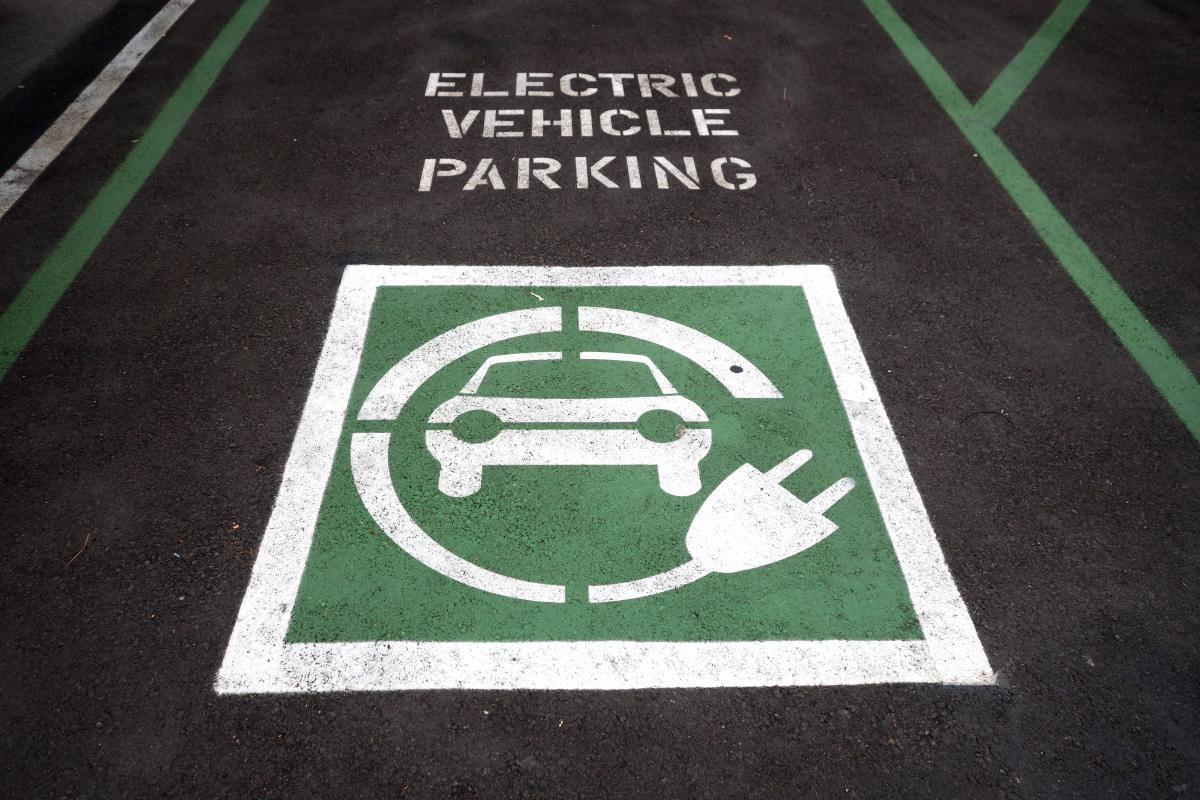Angeli Mehta asks whether this year marked the beginning of the end of our love affair with the combustion engine
Hardly a month seems to have gone by this year without a significant declaration on electric vehicles. Cities have been queuing to announce restrictions or bans on diesel cars, and outlining plans to buy electric buses; some car makers have promised an end to combustion-only engines, while others are investing in electric vehicle production in China; money is being sunk into battery technologies.
So is this the beginning of the end of our love affair with the combustion engine and how soon will it be consigned to the scrap heap?
At the start of the year more than 2 million electric vehicles were on the roads – mostly in China, the US and Europe. Still, that’s just 0.2% of all passenger cars, according to the International Energy Agency (IEA), so there’s a long way to go before they can take a bite out of demand for oil and growing greenhouse gas emissions.

Take-up of EV has been uneven. The International Council on Clean Transportation (ICCT) reckons that 40% of those 2m vehicles are in just 20 cities. And with the EU taking an unambitious approach to getting the numbers up, cities are going to have to continue to make the running on promoting electric vehicles.
Paris Mayor Anne Hidalgo wants diesel vehicles out of the city centre by 2020, to tackle air quality and cut deaths from respiratory and heart disease. The city’s legislators have already outlawed diesel vehicles registered before 2000. In Madrid, plans are being drawn up to make some of the city’s busiest streets car free, and outlaw all diesel vehicles by 2025. Copenhagen wants to ban any new diesel vehicles from 2019 onwards, oddly leaving more polluting, older vehicles free to use the city. Oxford announced plans to prohibit small non-electric vehicles from the city centre by 2020, gradually expanding to all vehicles, including HGVs, by 2035.
Thanks to an analysis by the ICCT, we now know that in Europe the gap between stated and actual CO2 emissions grew to 42% in 2016
Country-wide ambitions will take longer: Norway intends that no new combustion engines should be sold by 2025. In France the date is 2040, as is also the UK’s intention.
Last month’s UK budget introduced measures on air pollution, including an increase in taxes on new diesel cars from next year and a £400m fund to develop charging infrastructure for electric vehicles.
In October, the mayors of 12 cities, including London and Mexico City, said that by 2025 they will only buy electric buses. Already 61 European cities have more than 1300 of them. Chinese cities are charging ahead, given imperatives to clean up polluted air: in 2016, electric buses took 20% of the market, leading some commentators to predict that all China’s buses will be running on electricity within 10 years.

European consumers invested heavily in diesel on the back of fiscal encouragement. Legislators were driven by the promise of lower CO2 emissions. Instead Europe got a legacy of respiratory disease, and the discovery that Volkswagen had cheated on laboratory emissions tests, which in any case don’t reflect real-world driving conditions. Thanks to an analysis by the ICCT, we now know that in Europe the gap between stated and actual CO2 emissions grew to 42% in 2016. More people are getting in cars and vans so it is an important factor behind the growth of CO2 emissions in Europe since 2013.
Industry wants to keep going with regular engine cars: but the faster they make the shift, the cheaper it will be
This makes EU targets for cutting emissions all the more important. Sadly it has not opted for real-world test conditions – only better lab tests and in-car fuel economy monitoring. Under the European Commission’s latest proposals, average emissions of fleets of new cars and new vans in 2030 will have to be 30% lower than in 2021. An interim target is a 15% reduction by 2025. The Commission said this is to ensure emissions reductions occur as early as possible. However, there is no penalty for car makers that don’t meet targets. Critics have decried a lack of ambition and accuse the Commission of having given in to last-minute lobbying by Germany’s car makers.
China, unlike the EU, has set binding targets for sales of electric vehicles. In September it announced that carmakers selling over 30,000 vehicles a year in the country must sell 10% plug-in hybrid or electric by 2019. This has prompted a series of joint venture announcements from Europe’s major car makers. Volkswagen has committed €10bn (£9bn) to team up with Anhui Jianghuai Automobile Co (JAC)to deliver 400,000 electric vehicles by 2020, with the first new model rolling off the production line next year. It’s also signed up to an R&D venture with JAC on both internal combustion and new energy vehicles. In Europe, the diesel scandal has prompted a big rethink: VW says it will spend €34bn in the next five years, mostly on the electrification and hybridisation of all its models. VW now anticipates that one in four of its new vehicles will be battery-only by 2025. However, it still expects to be earning its bread and butter from the combustion engine in the foreseeable future.

Nissan and Renault are also going to build in China. They’re partnering with DongFeng to locally design and produce an EV by 2019. (Nissan’s Leaf is already assembled in China). Ford is investing $753m to make and sell EVs with its partner Anhui Zotye Automobile; and the list goes on, with Daimler and BMW also investing. BMW, which launched the i3 in 2013, is designing an electric Mini, which will be built in the UK from 2019. Florent Grelier, clean vehicles engineer at the NGO Environment & Transport, says European car makers who keep investing in internal combustion engines could find themselves overtaken by Chinese technology. They’ll have to invest here to keep the supply chain in Europe, he suggests. “Industry wants to keep going with regular engine cars: but the faster they make the shift, the cheaper it will be.”
The oil companies are, unsurprisingly, cautious in their estimates of when oil consumption will peak, suggesting anywhere between the 2020s and late 2040. Uptake of electric vehicles, especially in the developing world, will have a huge impact: according to the IEA, passenger transport alone consumed 26% of global oil output in 2015.
Bloomberg suggests demand for electric vehicles will outstrip that of conventional engines by 2038
Electric vehicles are still much more expensive than conventional cars, but some analysts predict that could switch as soon as 2019 - although again, estimates vary wildly. Bloomberg suggests demand for electric vehicles will outstrip that of conventional engines by 2038, with 530 million vehicles on the roads by 2040. The IEA’s most recent analysis suggests production commitments from car makers are enough to get 40 million to 70 million vehicles on the road by 2025, which would meet the Paris Declaration on Electro-mobility. But it is not enough to put us on the road to keep global warming below 2 degrees.
It’s not just the cost of electric vehicles that counts, but the availability of clean energy, battery technology and charging infrastructure. Bloomberg’s scenario also means a 300-fold increase in demand for electricity. While the oil companies are convinced we’ll keep buying, they’re also looking towards an electric future. Total has invested $2.5bn in companies producing batteries and solar power, Shell is building a wind farm off the Dutch coast and this autumn bought one of Europe biggest operators of electric charging points.
It plans to offer electric charging points at a small number of petrol station forecourts in the UK, and has already ventured into providing a hydrogen pump for hydrogen fuel cell vehicles.

The Hydrogen Council, a coalition of oil, car and power multinationals launched this year at the World Economic Forum in Davos, released a roadmap at the COP23 climate talks in Bonn last month. The roadmap says hydrogen has the potential to power 10-15 million cars and 500,000 trucks by 2030. Because hydrogen could play a key role in energy storage as well as in heating, the group estimates that it could account for almost a fifth of total energy consumed by 2050. This would make a significant contribution to cutting carbon emissions under the Paris Agreement.
But we don’t have to wait until 2030. A lifecycle analysis carried out for Transport & Environment showed that even in a country with carbon-intensive energy generation, such as Poland, an electric vehicle would produce 25% less carbon emissions over its lifetime than a new diesel car. In Sweden, where renewables dominate the power supply, the impact would be 85% less emissions.
We’re convinced in future the world will be more batteries than internal combustion engine - but the future is still quite a long way away
Meanwhile, companies that make the catalysts to reduce emissions from vehicle exhausts are also venturing into battery technology. Johnson Matthey plans to invest £200m to commercialise a cobalt-free battery material it has developed by 2021. It will help cut the cost of electric vehicles and increase their range. Chief executive Robert Macleod told the BBC last month that “we’re convinced in the future the world will be more batteries than internal combustion engine - but the future is still quite a long way away.”

Belgium based Umicore expects its battery division to overtake its catalysis division after 2020. It has already made big investments in factories making lithium ion batteries in China and South Korea and has deals with Tesla and Toyota to recycle the precious metal content of their batteries.
As Transport & Environment points out: “There is no shortage of technology, only the mechanisms to ensure it is deployed.” Indeed, 2017 has seen many promising developments that will put more clean cars and buses on our roads. Strong policy commitments are now urgently needed to encourage technology uptake and investment so the combustion engine will soon be consigned to history.
Angeli Mehta is a former BBC current affairs producer, with a research PhD. She now writes about science, and has a particular interest in the environment and sustainability. @AngeliMehta
Main image credit: Sebastien Durand/Shutterstock Inc.
EV C40 Cities air pollution London Paris China Nissan ICCT transport Renault BMW Hydrogen Council WEF climate
